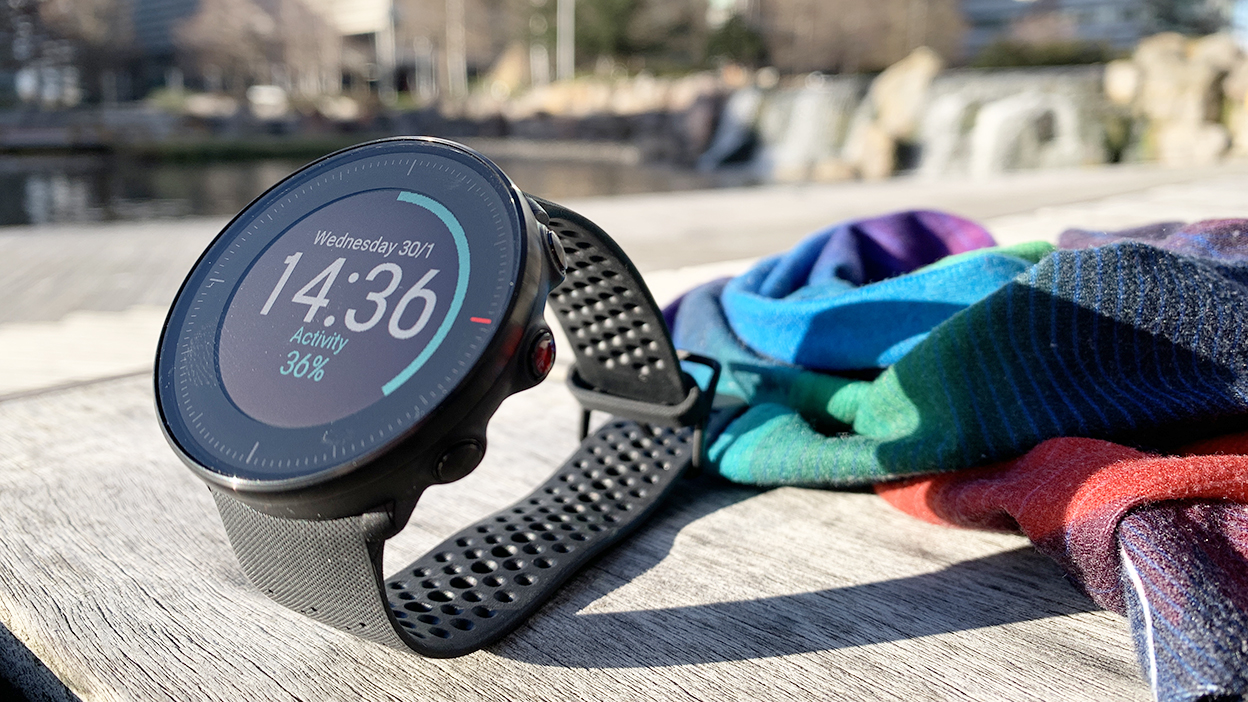Why you can trust TechRadar
Features
- Can track more than 130 different activities
- Some sports are tracked in more detail than others
- Polar Flow app is packed with information
Kicking off with the basics, the Vantage M can be loaded with up to 20 sport profiles at a time from a list of more than 130. These profiles track everything from running, cycling and swimming to CrossFit and hiking. They provide tailored algorithms to adapt to the challenges of the specific sport and for more accurate data.
For profiles such as running, cycling and swimming you get reams of data while others such as CrossFit offer feedback that’s limited to heart rate, duration and calories burned. Unlike the Garmin Forerunner 645 there’s no sets, reps and rest counting for weights workouts.
As you’d expect, many of the key features from the Polar M430 have been carried over. There’s 24-hour activity tracking, continuous heart rate monitoring, sleep tracking and access to Polar’s adaptive, personalized run training programs for distances from 5k up to a marathon.
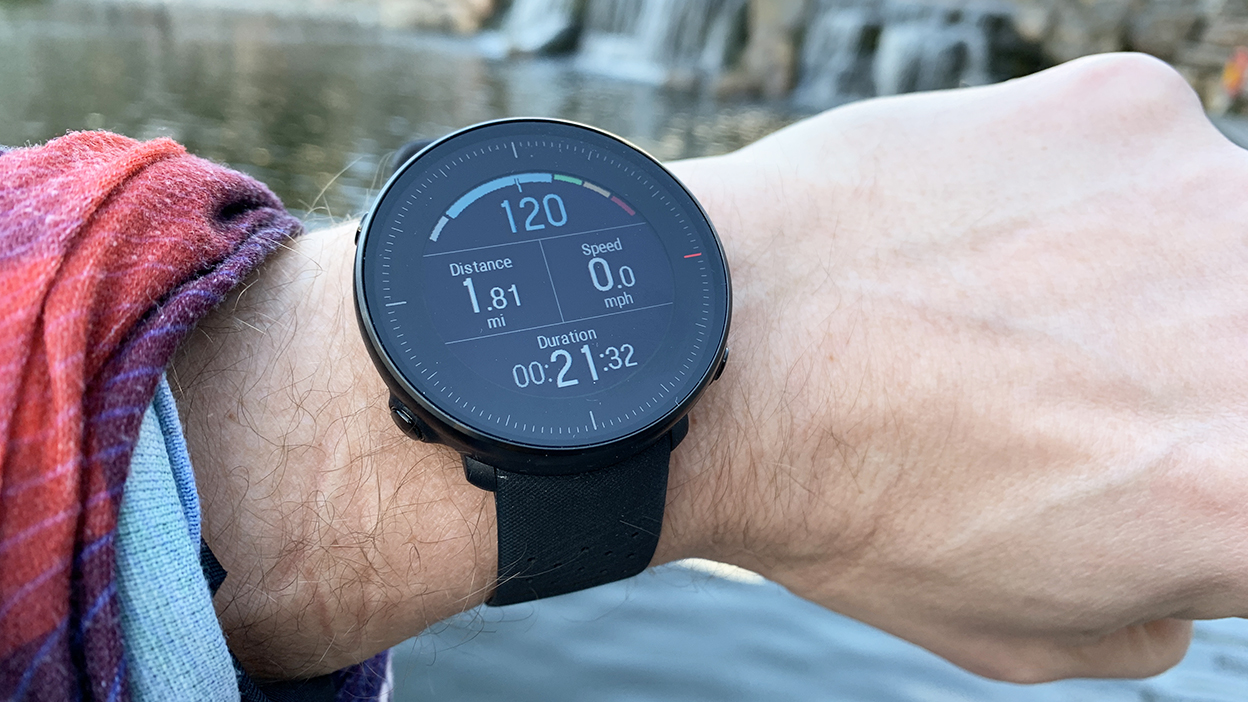
The watch syncs with the Polar Flow app and web tools where you can review your stats, delve deeper into your data and plan training.
A word on Polar Flow. The app and web tools are incredibly powerful but understanding the information and unlocking the insights does require a bit of study for the uninitiated.
If all you want is a post-run review of the key stats from your last session the mobile app serves this up succinctly. If you want to find out how that session has impacted your fitness and whether you’re improving over time, the information is all there once you know where to look.
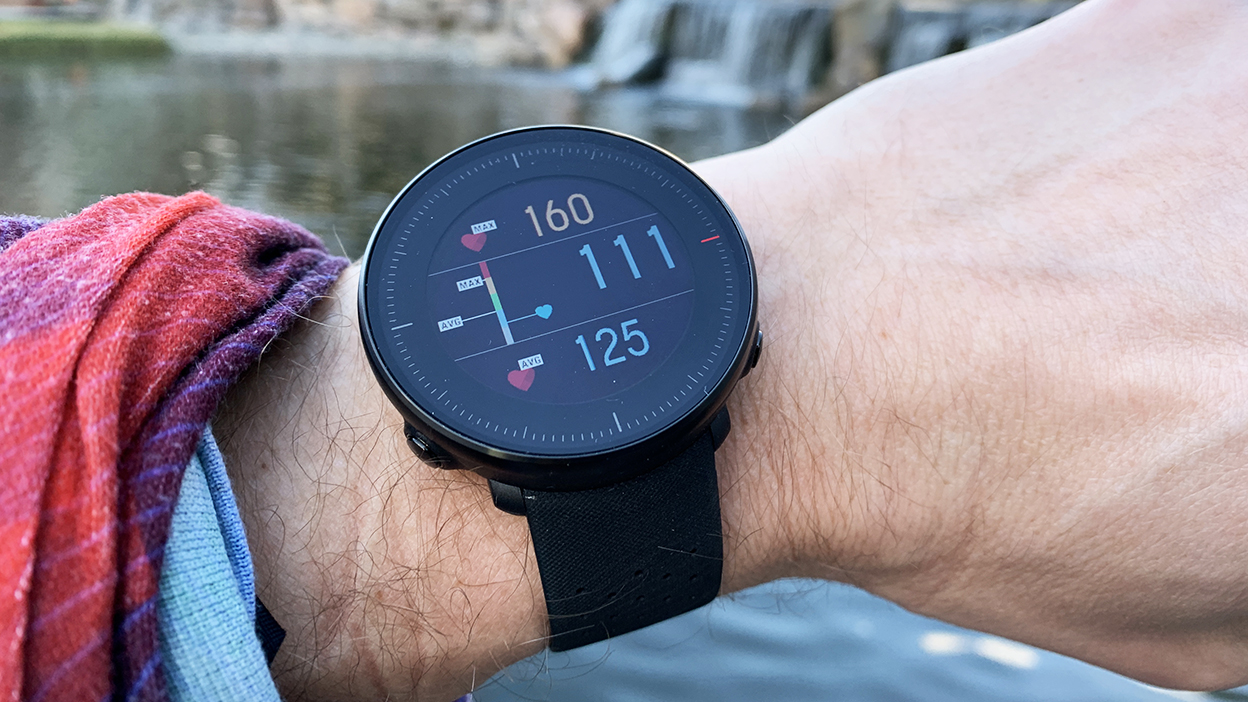
Improved optical heart rate?
- Polar's most accurate wrist-based optical heart rate monitor
- It can even track your heart rate when swimming
One of the main upgrades is the addition of what Polar calls Precision Prime wrist-based optical heart rate. It’s a mouthful but according to Polar this is its most accurate ever wrist-based, optical sensor setup.
Flip the Vantage M over and you can see the difference. Nine LED sensors (4 red and 5 green) provide additional optical channels, using several colors and wavelengths of light to penetrate deeper into the tissue. That means the watch can better sense the pattern of blood flow, the key to measuring heart rate.
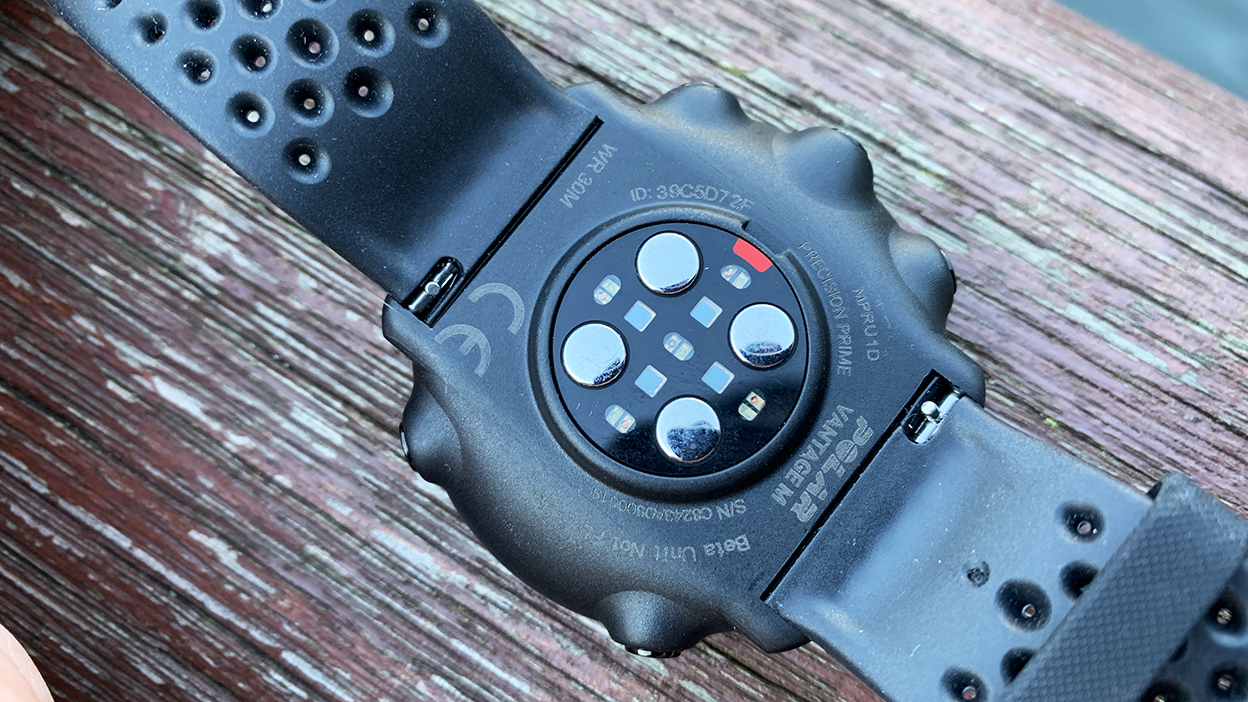
This is paired with 3D acceleration readings and measurements from four bioimpedance sensors. Together these identify rogue movements and the quality of sensor-skin contact, both of which can create noise that affects the accuracy of your heart rate data.
We tested the Vantage M optical heart rate against a Polar M430 paired with an H10 chest strap and the readings we got were virtually identical. We got an average heart rate on the Vantage M of 144BPM against 146BPM on the H10.
However, in another test where we ran a slow two miles up against the Garmin Fenix 5 Plus paired with a Polar H10 chest strap, there was some significant variation. The average heart rate from the chest strap was 110BPM and max was 131BPM, while the Vantage M wrist readout was 124BPM average and 160BPM max.
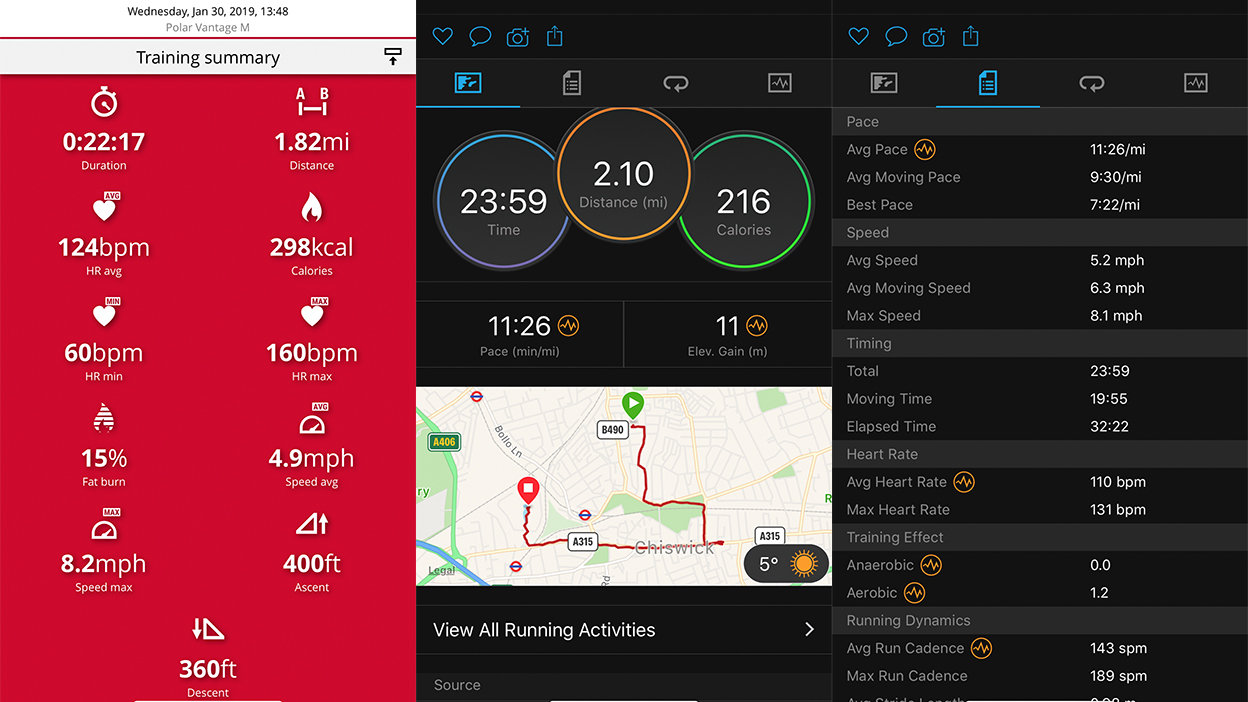
For swimmers, the Polar Vantage M’s optical heart rate tracks your BPM in the water, and there’s also GPS-support for open water swimming.
Training Load Pro
- Provides useful feedback and advice
- Warns us when we're over or under training
The Vantage M is excellent when it comes to advanced insights into the effects of your training over time. Its Training Load Pro feature set assesses the impact of your most recent sessions to reveal how effective your sessions are, how your fitness is progressing, and to offer advice as to what to do next.
Training load isn’t a new concept but for the first time Polar has separated out load into three areas: cardio load (how hard your cardiovascular system has worked), muscle load (how much your muscles were stressed during a training session) and perceived load (how hard you think you worked).
Muscle load can only be tracked if you’re using a third-party power sensor, but cardio and perceived load come baked into the M.
This data is crunched and turned into an at-a-glance overview of your current training status. You can see if you’re Detraining, Maintaining, Productive or Overreaching.
Via the watch and the app, Polar will then make recommendations about what you should do next, for example if the past five sessions have added a heavy training load, it will suggest you might consider a light cardio workout instead of an all-out beasting on the track. The aim is to avoid over training, injury and crucially to optimize the time you spend training.
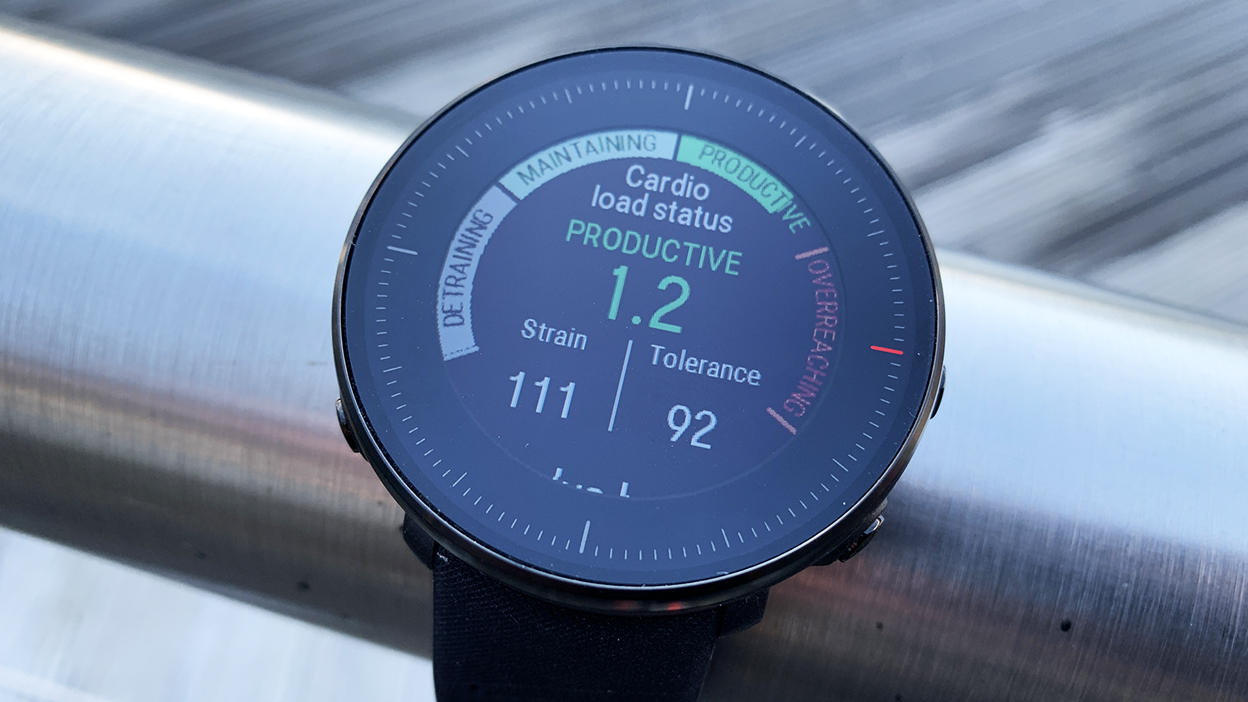
There are two new metrics as well, Strain and Tolerance. Strain measures the average daily load from the past 7 days to give an indication of fatigue while Tolerance looks at how intensively you’ve been training over the past 28 days.
Research has shown that when the ratio of strain to tolerance tops 1.5 you’re entering the ‘more likely to get injured zone.’ And the M will tell you when in danger of entering that, um, danger zone.
We found it took a little while for the M to ‘get to know us’ but after a couple of weeks the feedback matched how we felt and more often than not offered up useful advice.
For example, after a period of 3 days without training due to a small injury, we got the message “You’ve been training less than usual but just enough to maintain your fitness. If you keep this up for long, detraining will occur.”
What’s strong here is that Polar is turning data into more human, relatable and actionable insights. That’s definitely a step up. What we’d love though was if you could tell the watch why you weren’t training.
It already asks you questions about how you perceived your training and adding more layers to make this more of a two-way feed could bring big benefits. After all, we are humans not machines and the more our devices understand the other pressures in life, the more valuable and useful they’ll be.
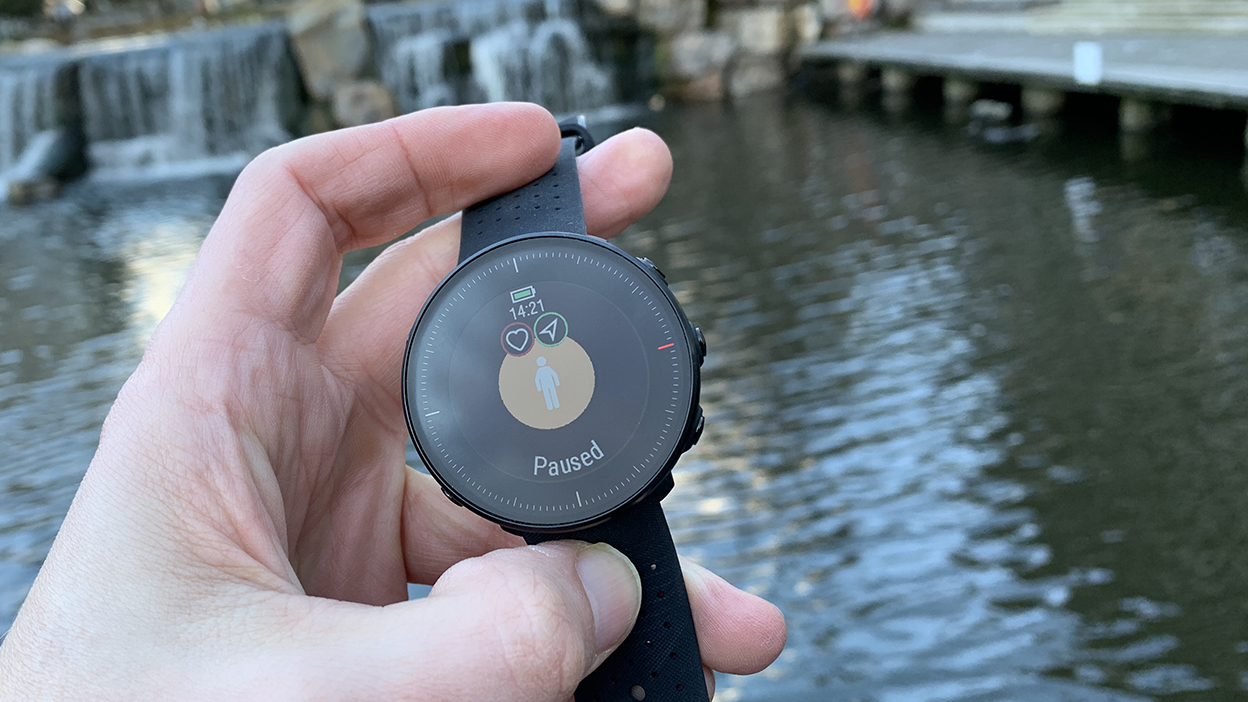
GPS tracking and accuracy
- GPS hooks on quickly
- Seems accurate in tests
The Polar Vantage M features GPS and A-GPS, or assisted GPS, for a fast first fix onto the satellites. We found the hook was rapid and then in our comparative tests the M matched up well against the very reliable Garmin Fenix 5 Plus in terms of mid-run pacing and overall distance tracked.
Running power
- Running power needs extra equipment to work
The ability to track running power from the wrist is one of the standout features on the Polar Vantage V but sadly that doesn’t feature on the M.
You can however pair a third-party sensor such as the Stryd footpod with the in-run data fed onto your watch and your muscle load stats added into your training load insights.
Smartwatch skills
- Smartwatch notifications are coming later
- No contactless payments or music controls
Outside of getting sweaty, the Polar Vantage M will offer some smartwatch capabilities, but these are very much still in the pipeline. Smartphone notifications and alerts are coming later as a software update, for example.
What you won’t get are things like music controls, built-in Spotify, or contactless payments, which you can find on the likes of the Garmin Forerunner 645 Music. This is still a training tool first and foremost rather than a smartwatch that does sports.
Battery life
- Around 30 hours of workout time
- Lasted us almost 2 weeks
When it comes to staying power, the Vantage M claims a very competitive 30 hours of workout time using full GPS and optical heart rate. In our tests we found this was pretty much spot on.
We found we’d get just short of two week’s training from a single charge based on four one hour and one long 2-3-hour sessions per week. That’s on top of the everyday usage.
One thing we’d like to have seen though was the ability to adjust certain settings on things such as GPS, heart rate, screen light and brightness that could be used to extend battery life.
Current page: Fitness, features and battery life
Prev Page Introduction, design and display Next Page Verdict